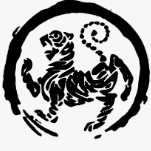-
Posts
83 -
Joined
-
Last visited
Everything posted by KorroddyDude
-

The Karate Kid - 40 Years
KorroddyDude replied to KarateKen's topic in Martial Arts Gaming, Movies, TV, and Entertainment
I've read that the Coba Kai series won't be considered canon in this movie. Did that change? -

Trying to spark my interest in karate again
KorroddyDude replied to Bradlee's topic in General Martial Arts Discussion
I'd say it's cruel. With children, I understand. Not all of them are there by choice, and the instructors end up having to deal with that (at least for as long as they choose to). For adults, it's different. As I said before... when motivation fails, discipline prevails. This means that everyone is gonna have those times when motivation is lacking, but discipline is what made them show up and get on the floor that day. Give them some credit. Hell, give them more credit than those who only show up when they're motivated (i.e., not enough to maximize the benefits of the training). -
When I was suggesting that it could be considered American moreso than Korean, I meant in a "for all intents and purposes" sense. Boxing, as we know it today with its Marquess of Queensberry Rules, originated in the UK. However, with Americans and Mexicans having dominated the sport for so long, no one associates boxing with the UK. The rise of Anthony Joshua and Tyson Fury came too late to change that. Paprika is generally considered to be a Hungarian thing... even thought it's native to the New World and was brought back to Europe by Columbus' crew. Similar history with Italy and tomatoes. So when I say that TSD may as well be American now, it would be analagous to these examples.
-

Trying to spark my interest in karate again
KorroddyDude replied to Bradlee's topic in General Martial Arts Discussion
...when motivation fails, discipline prevails. -
I'm kind of curious if "Korean karate" is even accurate. From what I've read, it went something like this: with the boom of Eastern Martial arts beginning in the early second half of the 20th century from China, Japan, and Thailand; South Korea wanted to make a name for itself. TSD wasn't fit for this because it wasn't unique enough to give Korea it's own thing. This lead to TKD. Apparently, Hwang Kee wanted to be the chairman but was not selected for it, so he stayed with MDK TSD in order to remain the head of something (apparently, the person who was selected to chair TKD defected to the North - so not choosing Hwang Kee was probably a mistake). TSD eventually became bigger than himself, so he couldn't maintain the control over it that he wanted to - so now to correct this, we have Soo Bahk Do, which Hwang Kee had trademarked. In any case, TKD became the art that Koreans held onto. From what I've read, TSD dojangs are almost non-existent in South Korea - only two exist in the entire city of Seoul. Not that TSD is popular in Japan either, but it is more than in South Korea. It seems that Koreans have largely divested from TSD decades ago and don't want much to do with it. It might as well be American now.
-
Right, the only entities I know of who are in relationships where they are the ones getting paid while having the upper hand are pimps and the IRS. Two things that no sensei would ever want to be compared to (at least I hope not).
-
Is the customer always right? No. However, I don't think it should be as one-sided as some here are suggesting it should be. In almost any other relationship where one person is paying another, it's the person doing the paying that has the upper hand in the relationship. And I'm not suggesting that it should be like that in martial arts. But at the same time, the person doing the paying should at least have some pull in the relationship other than the ability to "leave if they don't like it."
-
In my opinion, there's really no room to play semantics on the word "master" if your school has that as an official title. If your school says a 5th dan is a master, then that's when you're a master. By the way, I think titles like Master and Grand Master may be more of a Korean martial arts thing, as 5th dan in some Japanese arts confer the title of Renshi (which does not translate to "master"). "Master" in titles - whether in martial arts, among tradesmen, academic degrees - doesn't mean you know everything. But it does imply a certain level of authority in the relevant subject.
-
In a personal sense, sure. But if you walk into a TSD dojang, there's nothing on the walls showing homage to art's Japanese or Okinawan roots. If you walked into a TSD dojang knowing absolutely nothing about the art, you'd automatically think that it's rooted 100% in Korea. It's no different in Japanese and Okinawan karate. There's nothing on the walls of a karate dojo showing homage to the art's Chinese roots. That's because we don't consider karate to be "Okinawan kung fu."
-
You'll also notice that Kreese refers to his school as a "dojo" and Johnny addresses him as "sensei." That's not the norm in TSD, correct? Isn't it supposed to be "dojang" and "sabum," respectively? I said this: I'll grant "Korean karate," and I'll even add "American karate." As long as the words "Korean" and "American," respectively, are always used when referring to those arts. Just mountain lion and Mongolian barbecue never being referred to as simply "lion" and "barbecue." The issue here is this: if TSD merely started in Korea and Koreans simply adjusted it to their own vernacular and allowed for other nationalities to do the same as TSD spread... that might be one thing. Kind of like Western boxing and wrestling. But that's not what happened. Korean culture is embedded into TSD. That's what separates it.
-

Memories of first belt test
KorroddyDude replied to KarateKen's topic in Share Your Testing, Grading, or Promotion
Or eight hours (and every student is active the entire time), as is the case in some Kobayashi Shorin-ryu orgnanizations in the US. I'm fine with my 1.5 hour test, and it only being that long because each belt rank is called up one at a time for their kihon, kata, and kumite. I think the total time each student spends on the floor during a test is between 10 and 15 minutes. -

How important is time in rank?
KorroddyDude replied to Luther unleashed's topic in Instructors and School Owners
I don't see a problem with time-in-grade requirements. If they're good enough for militaries who are tasked with defending entire nations, then it surely can't hurt anywhere else. Generally speaking, in Shotokan, the TIG requirements are for the dan grades - one year at ikkyu for shodan, two years at shodan for nidan, three years at nidan for sandan, and so forth. Tests are every three months; so a brand new white belt who signs up today could test for yellow belt next week if that's when the test is scheduled. Ultimately, they still have to pass the test in order to be promoted. Technically, as you noticed, this creates a de facto three month TIG for each kyu grade. Personally, I like it that way. I've heard of schools that simply surprise students at the end of class with their new belts rather than testing. I wouldn't be a fan of this. Students showing up to class hoping that today is gonna be their day, and they go home livid - and this continues on indefinitely. And the reason why a student did or did not get promoted in this case can't be "quantified" (for lack of a better term) the way it can in the case of testing. -
I'd like to agree with Jesse Enkamp on this, but there's a problem with that: how do we know to use that word when addressing a particular person in the first place? There are two ways 1. We were told to address the instructor as "sensei." 2. We saw other deshi addressing the instructor as "sensei," and followed along. But even then, there had to be a point in time when the dojo first opened that there were no other deshi to observe using the term "sensei." So how did it start? See #1
-
Two things: 1. We all know why Wikipedia can't be used as a reference, and this is an example. Karate-do is "the way of the empty hand," not "tang hand. The character for Tang 唐 is pronounced "tō" in Japanese. The characters for karate-do are 空手道, which is pronounced "kong soo do" in Korean. It was "tang hand" in Okinawa before spreading to mainland Japan, but that was way before Koreans trained in it. 2. By the way, none of that matters. Even if they changed the name of it to "kong soo do," I still wouldn't consider it to be karate. If I walk into a TSD dojang, I'm going to see hangul everywhere, people using Korean words, uniforms with piping on the edges, etc. I should be able to walk into any karate dojo, regardless of style, and be able to follow along with their commands (with the exception of their kata). I can't do that in a TSD dojang. If karate is the French language, TSD would be Haitian Creole.
-

Training Camps and Student Promotions
KorroddyDude replied to Nidan Melbourne's topic in Instructors and School Owners
I can understand instructors feeling as though their toes were stepped on. But is this not common among the high dan grades? For example, Hirokazu Kanazawa left the JKA as a 7th dan. As the kaicho of SKIF, no one within the organization could promote him. He was eventually promoted to 8th, 9th, and 10th dan by IMAF. If Japanese and/or Okinawan cultures are not opposed to "do I as I say, no as I do" like we are in the West, I can understand the above being acceptable while not allowing it for lower dan grades. Otherwise, not. -
Never, I repeat, never purchase a Tokaido that's not made in Japan ever again. Those made-in-Pakistan gis that are licensed to use the Tokaido name - the ones sold on Tokaido USA and Tokaido Europe - are only slightly cheaper than the ones made in Japan. Spend the extra $20-$30 and wait the extra two weeks for the Japanese made Tokaido. If you want a Japanese brand name at the best possible price, look into Tokyodo (that's the brand I use). Costs less than Tokaido (even the made-in-Pakistan models), Hirota, Shobu, and Shureido. The only caveat to Tokyodo is that the pants are baggy like Shureido (which is what I personally prefer anyway). Edit: I'm referring to Tokyodo International. There is another "Tokyodo" brand that uses the logo of the letter T with wings. Don't get that one.
-
I wouldn't believe that claim if I had heard it. Chuck Norris had more than enough clout to make a name for TSD in its own right if he wanted to do that. He even had the clout early enough for TSD to make a name for itself in the US before karate could. That is, if he wanted to do that. Even if no one has ever heard of the particular martial art for which you want to open a school, putting "martial arts" on the signage would work just as good as "karate" - maybe even better, in the case of people who are interested in martial arts but not karate. If they say "karate," it's because they probably believe that that's what it is.
-
What other characters are used for TSD? Because it actually translates to To-te (do). To get "karate," you would need the hancha for "kong soo" (do). A mountain lion can never simply be called a lion, a koala bear can never simply be called a bear, and Mongolian barbecue can never simply be called barbecue. So while I'll grant TSD "Korean karate," I won't grant simply "karate."
-
Size advantage is mitigated better by grappling than striking. That's the reason why BJJ has a reputation as being for people who are "scared to get punched in the face." Even if a 20-year-old Mike Tyson had never looked in the direction of a boxing gym in his life, you're going down if he lands one on you. Regardless of how much martial arts training you have. If you ever found yourself in that situation, you'd know that trading blows with him would be a stupid idea. So you grapple.




